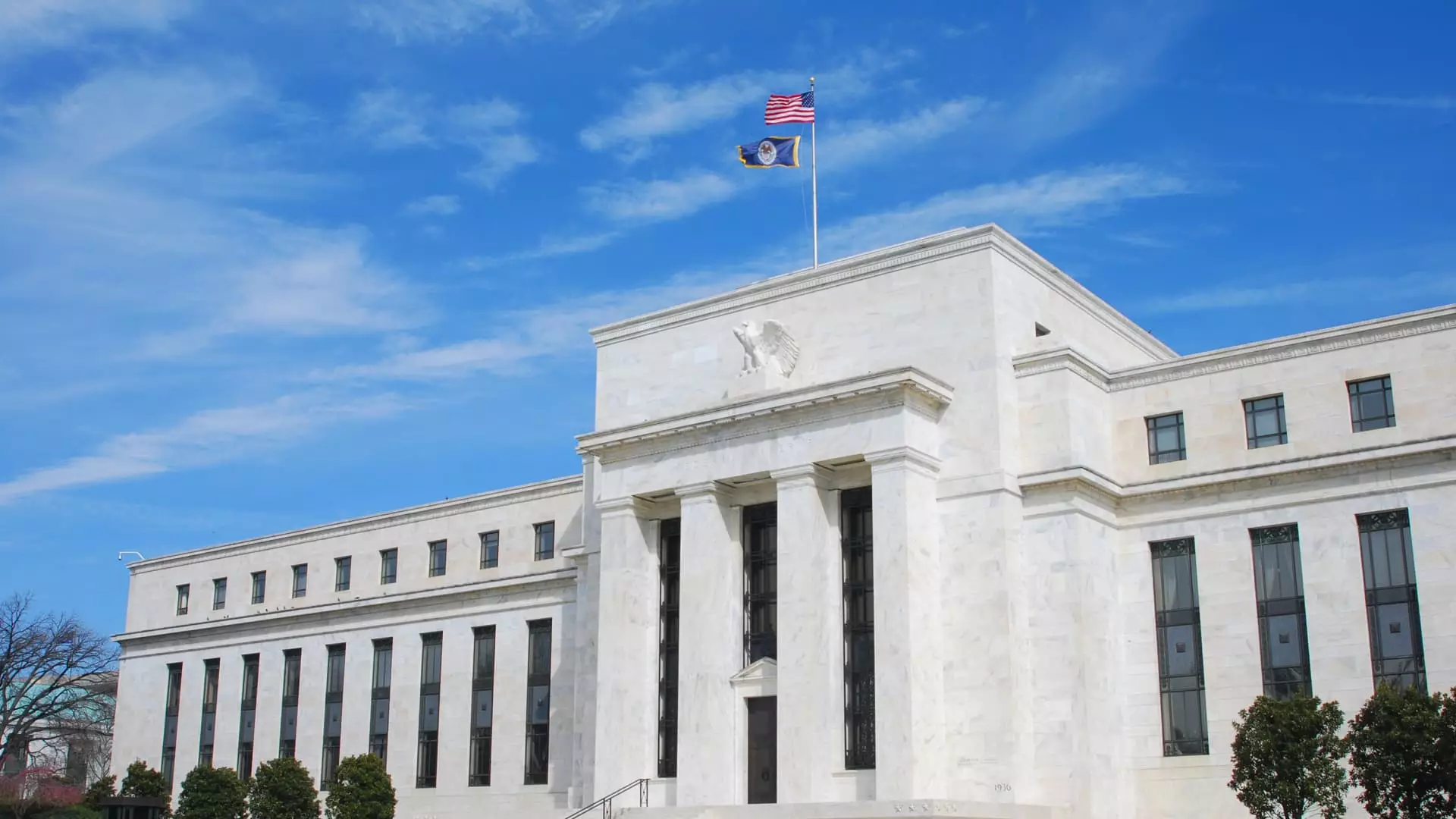The Federal Reserve’s decision to maintain interest rates at their current levels could be perceived as a sign of stability; however, beneath this veneer lies a brewing economic storm. Despite a recent dip in inflation, the specter of rising costs looms large over the American consumer—thanks in no small part to the escalating trade war. The assertion from Andrzej Skiba, head of U.S. fixed income at RBC Global Asset Management, that “this is likely just the beginning” with respect to tariffs suggests that we are entering a precarious phase where price hikes on essential goods may soon become commonplace. The broader implications of these tariffs challenge the very foundation of consumer confidence and the potential for any rate cuts by the Fed.
Inflation shouldn’t merely be viewed through the lens of percentage points. It creates an insidious environment in which everyday Americans feel increasingly pinched financially. When costs rise across the board, it erodes purchasing power, leading to household strain that is already palpable. Greg McBride from Bankrate.com aptly encapsulates this sentiment: “Consumers are stretched and stressed.” If the drying up of disposable income isn’t alarming enough, the question begs—how can the Fed justify keeping rates stable in an environment where additional pressures are building?
Consumer Expectations and the Housing Market Dance
One of the more immediate spheres affected by the Federal Reserve’s stagnant position relates to mortgages and various forms of consumer debt. Though it’s true that mortgage, auto loan, and credit card rates are trailing lower, the reality of these rates remains concerning. As Matt Schulz from LendingTree mentions, even with some positive movements in mortgage rates—down from 7.04% to 6.77%—the overall financial environment is riddled with uncertainty. Stability in borrowing costs should not overlook the fact that many Americans are still grappling with the mounting pressures of existing debts.
Consider the housing market, where anecdotal evidence suggests growing hesitancy among potential homebuyers. The lure of lower mortgage rates might not be enough to counterbalance the grim realities stemming from inflationary worries and political instability. As economic uncertainty escalates, the psychology of consumer expectation shifts. When people fear the worst, they are less likely to make significant financial commitments, even if the rates appear favorable. This fear could catalyze a cycle that weakens the housing market further, creating additional risks for both lenders and buyers.
The Credit Card Trap: Rising Balances and Stressed Consumers
The reality of credit card debt remains an acute issue, particularly as revolving debit rises 8.2% year over year. This alarming statistic illustrates more than just a burden; it reflects a deepening crisis for many households struggling to navigate soaring prices. While APR on credit cards has decreased slightly from 20.27% to 20.09%, this marginal decline does little to alleviate the mounting pressures faced by consumers. As Schulz points out, consumers are continually caught in a game of cat and mouse with their finances, where balancing increasing debt against rising living costs seems increasingly insurmountable.
Moreover, it is critical to recognize that these high credit card rates are intrinsically linked to the Fed’s benchmark interest rate. Although the Fed’s recent decisions may have resulted in nominal lower rates, there is still a vast chasm between what consumers pay and what they could ideally afford. With payments continuing to generate strain, it becomes evident that more needs to be done to address this economic apparatus that seems designed to keep consumers from financial equilibrium.
The Automotive Quandary: High Prices and Uncertainty
Let’s not forget the automotive sector, where rising car costs, compounded by inflationary pressures and trade policy uncertainty, are making it increasingly difficult for consumers to afford new vehicles. The average rate on a five-year new car loan has seen a slight decline from 7.53% to 7.42%—yet, in an age where the cost of goods is spiraling upwards, even this minor benefit becomes muted. With the looming threat of tariffs driving prices further skyward, consumers in the market for vehicles face a triple whammy: high rates, elevated prices, and a general sense of dread about what’s to come.
The central irony may lie in this paradox: as the cost of borrowing eases slightly in the short term, the pricing pressures threaten to offset those benefits entirely. Can we genuinely herald lower rates amidst an environment that craves a return to fiscal common sense?
Student Loans: Fixed Rates, Mounting Pressure
For a significant portion of the population, fixed interest rates on federal student loans offer a degree of predictability, yet that does not nullify the economic weight carried by these obligations. Undergraduate federal student loan rates have surged from 5.50% to 6.53%, showcasing an unrelenting upward trend that is likely to continue. In an era when educational costs have reached meteoric levels, fresh graduates may find themselves increasingly burdened by debt load before even stepping into the job market. Such a reality adds to the current malaise gripping younger demographics, who harbor vast anxieties over their financial future.
As student loan rates continue to inch upward alongside broader economic concerns, it is paramount that solutions are sought, ensuring these bright young minds can focus on their future rather than drowning in debt. Given the various ways in which rising costs cripple so many, it’s essential that policymakers recognize the interconnectivity of these economic challenges to navigate towards a more equitable and sustainable future.

